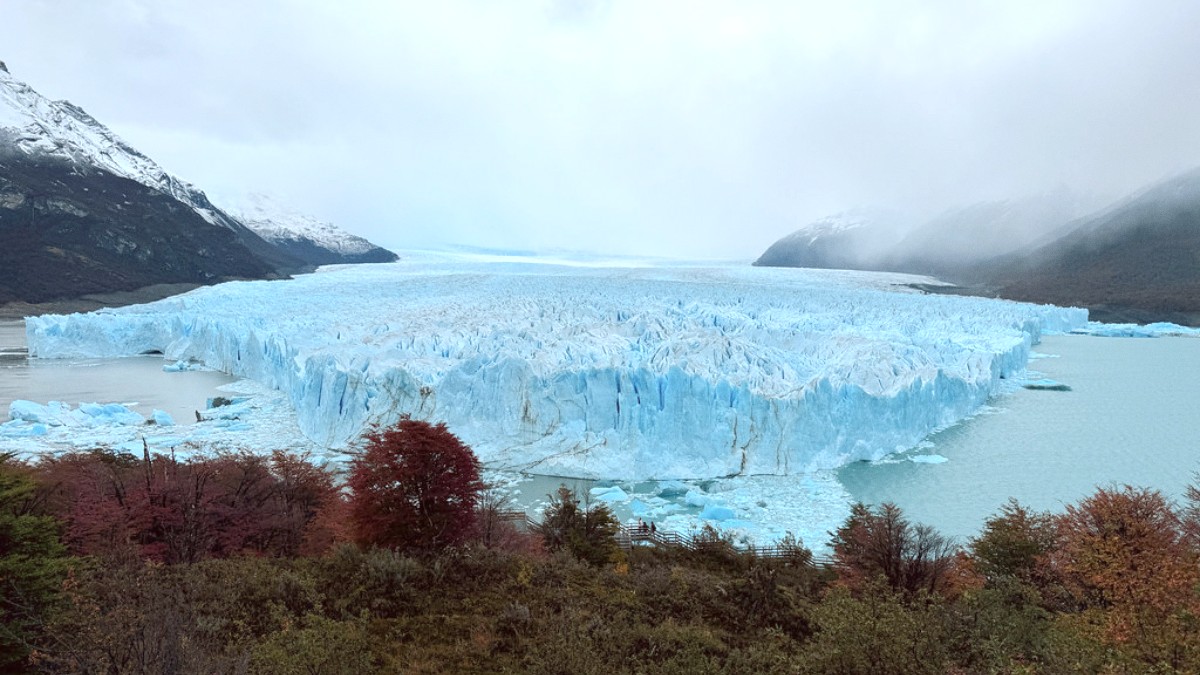
Southern Patagonia, Chile
Your visit's timing greatly shapes your experience, largely due to Patagonia's famously changing weather and seasonal tour offerings.
Patagonia experiences all four seasons, but weather can change quickly within a day. Layers are always good, no matter the month.
Each season has its own unique aspects. Consider what matters most for your travel dates.
Patagonian winds are a constant, especially strong in summer. These winds make hiking challenging and increase the perceived cold. Always pack windproof outer layers. Weather changes quickly; prepare for sun, rain, wind, even light snow in hours. Pack layers for easy adding or removing.
December-February
Best weather for trekking, warmer temperatures, maximum daylight. All tourism services open.
Most crowded, book lodging and tours far ahead. Peak prices.
October-November, March-April
Fewer crowds, potentially lower prices. Pleasant hiking temperatures. Autumn foliage or spring wildflowers.
Some services may not be fully open at season edges. More unpredictable weather.
May-September
Fewest crowds, a quieter experience. Lower prices. Unique winter scenery.
Many tours and businesses close. Limited daylight. Very cold, snow/ice impact travel.
December to March presents the most favorable conditions for hiking the W or O circuits, with maximum daylight and warmer temperatures.
Early spring (October-November) or late autumn (April) can bring fewer crowds and good opportunities for birdwatching or puma spotting. Pumas appear more visible when their prey (guanacos) move to lower elevations.
Tours generally run during summer when access is clear and conditions allow.
These trips happen in summer, when conditions are safer.
Do not rely solely on long-range weather forecasts for Patagonia. Check the local forecast daily.
Prepare for varied conditions by packing clothes for warmth, wind, and rain, regardless of the season.
Patagonia's weather is notoriously changeable; be prepared for anything at any time.
Most visitors find entry simple, but specific rules apply based on your country of origin.
Chile has a broad program for visa-free travel, allowing many nationalities to enter for tourism. This covers travelers from the US, Canada, EU, Australia, and New Zealand. Stays of up to 90 days are common for these citizens.
Upon entry into Chile, regardless of visa status, present several documents.
Chile does not have specific health-related entry rules for travelers regarding vaccinations. Always consult your doctor or a travel clinic before your trip.
Travel expenses vary based on your style and the time of year.
The official currency of Chile is the Chilean Peso (CLP). ATMs are widely available in Puerto Natales, especially downtown. Search for machines from BancoEstado, Banco de Chile, or Santander.
Credit/Debit cards: Visa and Mastercard are accepted at most hotels, restaurants, and larger shops. American Express sees less common acceptance. Inform your bank of your travel plans to avoid card holds.
Daily Costs: CLP 40,000 - 65,000 (approx. USD 45-75). Excludes major multi-day tours.
Hostel dorms (CLP 15,000-25,000). Self-catering or affordable local cafes.
Minimize taxi use, focus on free attractions.
Daily Costs: CLP 80,000 - 140,000 (approx. USD 90-160). Excludes major multi-day tours.
Guesthouse or mid-range hotel (CLP 60,000-120,000). Mid-range restaurants.
Occasional taxis, regional buses. Day tours and entrance fees.
Daily Costs: CLP 200,000+ (approx. USD 225+). Excludes major multi-day tours.
Boutique hotel or luxury lodge. Fine dining experiences.
Private transfers, rental car. Guided multi-day tours, specialized excursions.
| Category | Item | Price Range (CLP) |
|---|---|---|
| Accommodation (per night) | Hostel Dorm Bed | 15,000 - 25,000 |
| Mid-range Hotel/Guesthouse | 60,000 - 120,000 | |
| Meals (per person) | Budget (empanadas, local cafes) | 3,000 - 7,000 |
Patagonia's environment presents unique aspects, so awareness of common concerns and emergency plans helps you journey with peace of mind.
Chile has no specific required vaccinations for entry from most countries.
Visit your doctor or a travel clinic 4-6 weeks before your trip for advice on routine and recommended vaccinations (Hepatitis A, Typhoid).
Maintain good hygiene throughout your journey.
Patagonia's environment sometimes causes health considerations.
Sunburn: High UV index even on cloudy days. Use Broad-spectrum sunscreen with high SPF, Wide-brimmed hat, UV-protective sunglasses.
Dehydration: Dry air and physical activity contribute to fluid loss. Drink plenty of water. Carry a reusable water bottle. For treks, consider water purification.
Minor cuts & blisters: A well-stocked First aid kit with antiseptics and blister treatment like Moleskin helps. Hypothermia: Weather changes quickly. Dress in layers, include waterproof and windproof outer layers. Altitude sickness: Puerto Natales is at sea level, most Torres del Paine trails are not high enough for severe altitude sickness. Stay hydrated.
Puerto Natales has basic medical facilities. Hospital Dr. Augusto Essmann Burgos is the local public hospital. Pharmacies are in town.
Ambulance (SAMU): 131, Fire Department (Bomberos): 132, Police (Carabineros): 133, Maritime Rescue: 137.
Tap water in Puerto Natales is generally safe. Consider a Portable water filter bottle or Purification tablets for hiking. Food hygiene in established restaurants is good. Choose street vendors with high turnover.
Puerto Natales is generally a very safe city with low crime rates. Petty theft, like pickpocketing, occurs in crowded tourist areas or bus terminals. No specific neighborhoods are known as dangerous.
Travel insurance is highly recommended. It covers medical emergencies, trip changes, lost baggage, and adventure activities. Make sure your policy covers specific activities like trekking or kayaking.
Cover medical treatment, evacuation, trip cancellation, and lost baggage. Ensure it covers adventure activities.
Save local emergency numbers (131, 132, 133, 137). Keep embassy/consulate info, insurance details, and family contacts handy.
Consider a local SIM card upon arrival for calls and data. AirHelp may assist with flight disruptions.